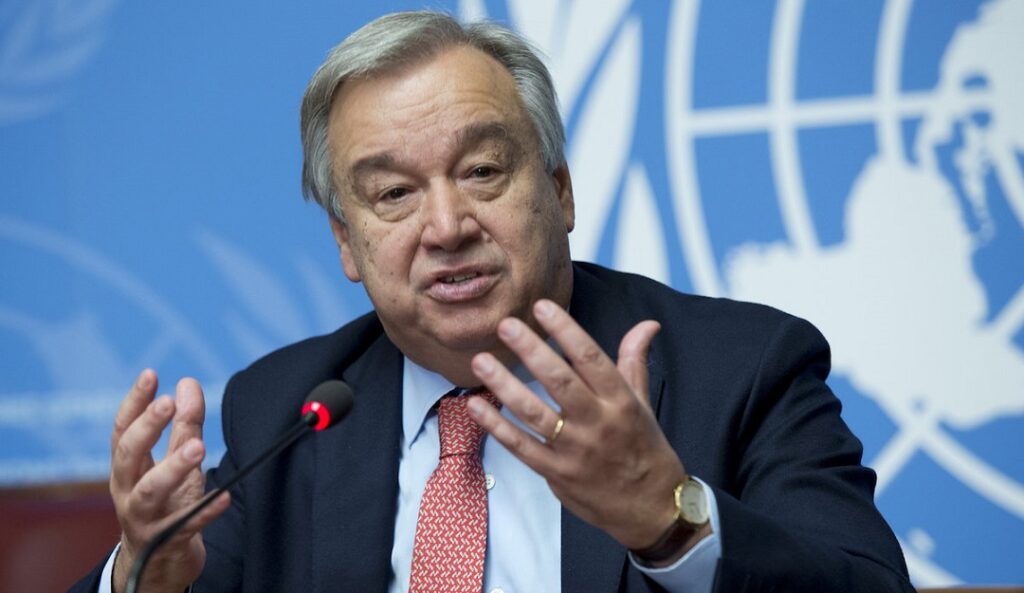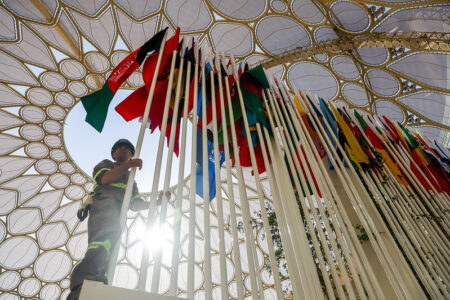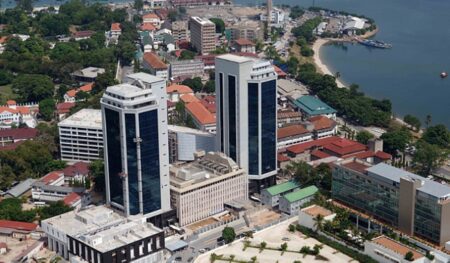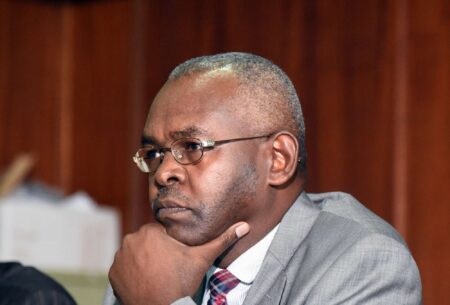- About 3.3 billion people are living in countries where debt interest payments exceed expenditure on health or education.
- African countries pay four times more for borrowing than the US and eight times more than wealthy European economies.
- UN Secretary-General António Guterres says growing debt burden is undermining global prosperity.
The United Nations has fired a warning shot on soaring global public debt, which hit record $92 trillion in 2022, saying that it risks sending more poor countries into the roiling economic crisis.
According to UN Secretary-General António Guterres, the swelling debt burden is undermining global prosperity. There has been a five-fold surge in public debt levels since 2000. Guterres says it “demands immediate action to tackle the escalating crisis affecting developing countries in particular.”
The UN Secretary-General underlined: “On average, African countries pay four times more for borrowing than the United States and eight times more than the wealthiest European economies. A total of 52 countries – almost 40 percent of the developing world – are in serious debt trouble.”
Soaring public debt fuels inequality
Huge disparity in interest rates is driving inherent inequality in the international financial system, burdening developing countries disproportionately.
Today, half of all developing nations spend a minimum of 7.4 percent of their export revenues servicing external public debt. Of special concern is the rapid growth of interest payments, surpassing key public expenditures. It is alarming that some economies are spending more servicing debt than on health and education, the UN noted.
At least 19 developing nations are allocating more money to interest payments than education. Another 45 economies are allocating more money to interest than their health budgets.
Further, an increasing reliance on private creditors, who offer expensive debt and shorter maturities, is exacerbating debt restructuring for developing countries. Currently, private creditors hold 62 percent of external public debt portfolio, up from 47 percent a decade ago. There is, however, no mechanism to address how to restructure debt across different creditor classes.
Also Read: China’s crucial role in Africa’s external debt restructuring arrangements
Urgent reforms on debt needed
The UN is calling for urgent comprehensive reform of the international financial architecture, including on debt. The measure, the UN says, will foster a more inclusive system that empowers developing countries. As a result, the UN adds, developing countries will actively participate in the governance of international financial system.
Addressing the high cost of debt and the mounting risk of debt distress is of utmost importance, UN notes.
“Establishing a debt workout mechanism is crucial to expedite progress under the G20 Common Framework for Debt Treatment, which has faced challenges due to creditor coordination issues and the absence of automatic debt service suspension clauses,” it said in a report.
Developing countries, especially those with high debt burdens, require increased liquidity to navigate crisis. Otherwise, a liquidity stress will easily morph into a debt crisis, UN noted. The UN says this goal can be achieved by expanding contingency finance.
Global safety net must work
Measures such as enhancing the use of Special Drawing Rights, temporarily suspending IMF surcharges, and broadening access to emergency financing through increased quotas must be pursued, UN advised. Additionally, a substantial increase in affordable long-term financing will be very critical.
“To get there, we will need to transform and expand multilateral development banks to support sustainable long-term development and mobilize more private resources,” Guterres said.
According to the UNDP, about 165 million people plunged into poverty between 2020 and 2023. This worrying trend unraveled even as debt servicing crowded out social protection, health and education expenditures.
The shift in priorities is triggering calls for the multilateral financial system to address debt restructuring at speed and scale. Since 2020, UNDP says poverty rates in poor countries are surging, with the number of additional individuals living on less than $3.65-a-day reaching 165 million in 2023.
In its report, The Human Cost of Inaction: Poverty, Social Protection and Debt Servicing, 2020–2023, these additional poor live in low and lower-middle-income economies. It adds that the poorest 20 per cent in low-income countries are suffering the most. Data shows that incomes of the poorest 20 percent remain below the pre-pandemic levels in 2023.
Also Read: Addressing Nigeria’s debt situation under President Bola Tinubu
Adaptive social protection
In response to this crisis, the UNDP is calling for adaptive social protection and a “Debt-Poverty Pause”. The UN agency says the strategy willredirect debt repayments toward other critical social expenditures.
Achim Steiner, UNDP Administrator, said: “Countries that could invest in safety nets over the last three years have prevented a significant number of people from falling into poverty. In highly indebted countries, there is a correlation between high levels of debt, insufficient social spending, and an alarming increase in poverty rates.”
Today, 46 countries pay over 10 per cent of their general government revenue on net interest payments. Debt servicing is making it increasingly harder for countries to support their populations. Overall, investments in health, education and social protection are getting less budget allocations, Steiner said.
“There is a human cost of inaction in not restructuring developing countries’ sovereign debt. We need new mechanisms to anticipate and absorb shocks and make the financial architecture work for the most vulnerable” he added.
Debt service payments
Over the past decade, debt service payments are consuming a large share of public revenue and expenditure in developing economies. Latest data suggests that the average low-income country devotes between double and triple the share of revenue or expenditure to servicing interest payments. Debt servicing accounts for 60 percent of education expenditures in these nations.
UNDP Chief economist George Gray Molina said: “As interest rates peak in 2023, the international financial system continues to stress the need for ‘temporal and targeted relief to the poor affected’ by the crises.”
However, highly indebted developing countries have run out of fiscal space for continued debt-financing. This challenge is translating into a squeeze on social protection and other expenditures.
“In the absence of credible debt relief, these countries are not able to deliver this ‘temporal and targeted’ support,” Molina said.
The brief – that builds on the findings of the UN Crisis Response Group report: A World of Debt, a growing burden to global prosperity” calls, in the short-run, for a “Debt-Poverty Pause.” It argues that this move will redirect debt repayment towards financing social expenditures and countering macroeconomic shocks.
“This systemic addition to the international financial architecture should be triggered automatically, to stabilize free-falls when exogenous shocks shrink developing countries’ fiscal space, bloat their debt servicing and throw households into poverty,” said Molina.
Future prone to shocks
This is the beginning of a new adaptive social protection architecture to prepare for a future prone to shocks, Molina noted. And the solution is not out of reach for the multilateral system.
According to the policy brief’s calculations, it would cost a little over $14 billion, which is approximately 0.009 percent of the global GDP in 2022, to mitigate the current surge of poverty and lift 165 million people living on less than $3.65 a day.
This is little less, on average, than four percent of poor countries’ public external debt service payments in 2022, which hit $370 billion.











